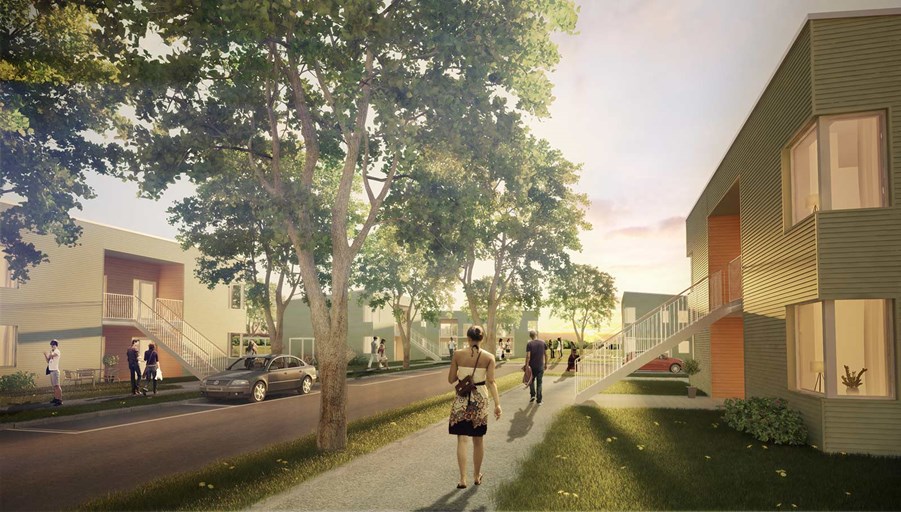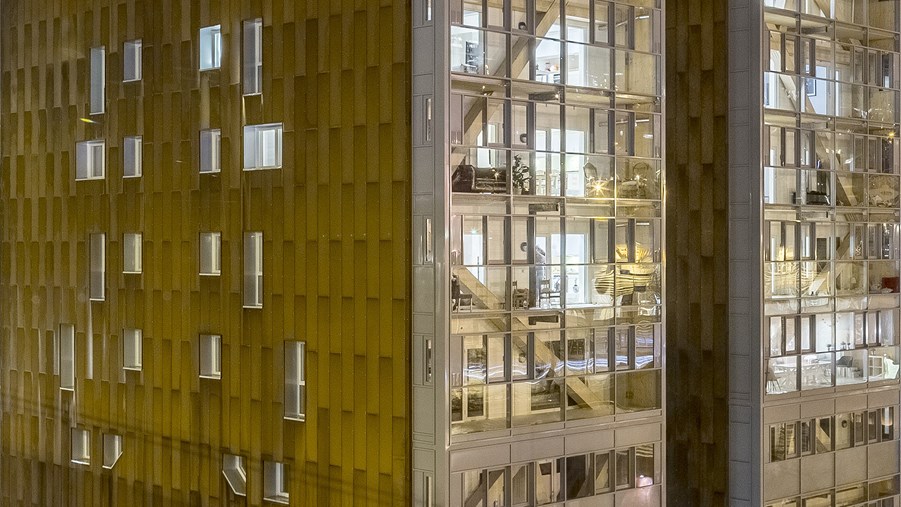
According to the European Commission, a European renovation wave will contribute to recovery and help to achieve climate goals. Using wood has a key role to play in this.
The Green Deal is at the heart of the EU’s COVID-19 recovery package and aims to make Europe the world’s first climate-neutral continent by 2050. This will be achieved by kick-starting a renovation wave that will make 35 million buildings energy- and resource-efficient by 2030. The European Commission is striving to at least double the pace of renovation over the next ten years to create 160,000 new green jobs in the construction sector.
“We have a once in a lifetime opportunity thanks to the recovery funds to accelerate work in Europe transforming this economy to become green, digital and more resilient. And renovation along with hydrogen and other things, are identified as an areas where we see a real priority and where we hope that the Member States will put really good investments in their national recovery plans,“ says Peter Handley, Head of Unit of Energy Intensive Industries and Raw Materials within the European Commission, at a January event with the Wood Be Better network focusing on using wood to green our buildings.
Another speaker at the event, Paul Brannen, Head of Public Affairs at CEI-Bois, the European Confederation of Woodworking Industries, high-lights how timber-based products can contribute in the renovation wave:
“The production and heating of buildings currently accounts for 40 percent of Europe’s carbon dioxide emissions. Consequently, the built environment plays a crucial role in how we counteract climate change. There are many opportunities for using sustainable timber-based products – which store carbon – within the Green Deal in general, and the renovation wave in particular.”
“By building in wood we could turn the built environment into a massive carbon sink which contributes in a big way to reducing greenhouse gas emissions and improving the quality of life for the people where they live and work. And also bringing together a much more circular economy, making good things out of waste products. The recycling and circularity are a big part of this, but also getting outside the straightforward industrial kind of approach and bringing in other actors like architects, designers and engineers,” he continues.
Industrial wood construction makes it possible
Sweden’s expertise in industrial wood construction will be important for Europe’s green transition, says Stefan Lindbäck, CEO of Lindbäcks, one of Europe’s leading construction companies for industrially produced apartment buildings:
“We have come to a position where about 20 percent of the family housing in Sweden are made with wood frames. What we see is that the demand has driven us to develop methods that we did not think that we could do, to a point where we can copy automated industry. When we have a cooperation with a supplier, we try to reduce all the waste. And we manage to reduce the waste to almost zero. If we all hook hands and don’t always try to find the highest revenue in every step, we can manage to make this planet survive.”
Lindbäcks has just signed its first overseas order. In Vantaa, Finland, 40 minutes northeast of Helsinki, a seven-storey building accommodating 50 apartments is about to be built. The basis of the build is being supplied by Lindbäcks, with 90 modules being transported across the border to the building site.
Another interesting project in respect of the renovation of Europe’s buildings is Timber-on-Top, a Swedish collaborative project to increase knowledge about additions and extensions to buildings using bio-based, prefabricated construction systems. Here, the basic idea is to reuse and develop existing buildings.
The wood-working industry is ready to deliver
Paul Brannen believes that the renovation market is now potentially bigger than the new-build market in Europe, and that the wood-working industry should position itself accordingly. In renovating 35 million buildings, a lot of insulation, doors, windows, walls, stairs, etcetera will need to be replaced.
“If the built environment is to become a carbon sink instead of a source of emissions, timber must become the primary material choice for both renovation and construction. While other industries are talking about sustainable solutions, the wood-working industry is ready to deliver right here, right now,” he says.




